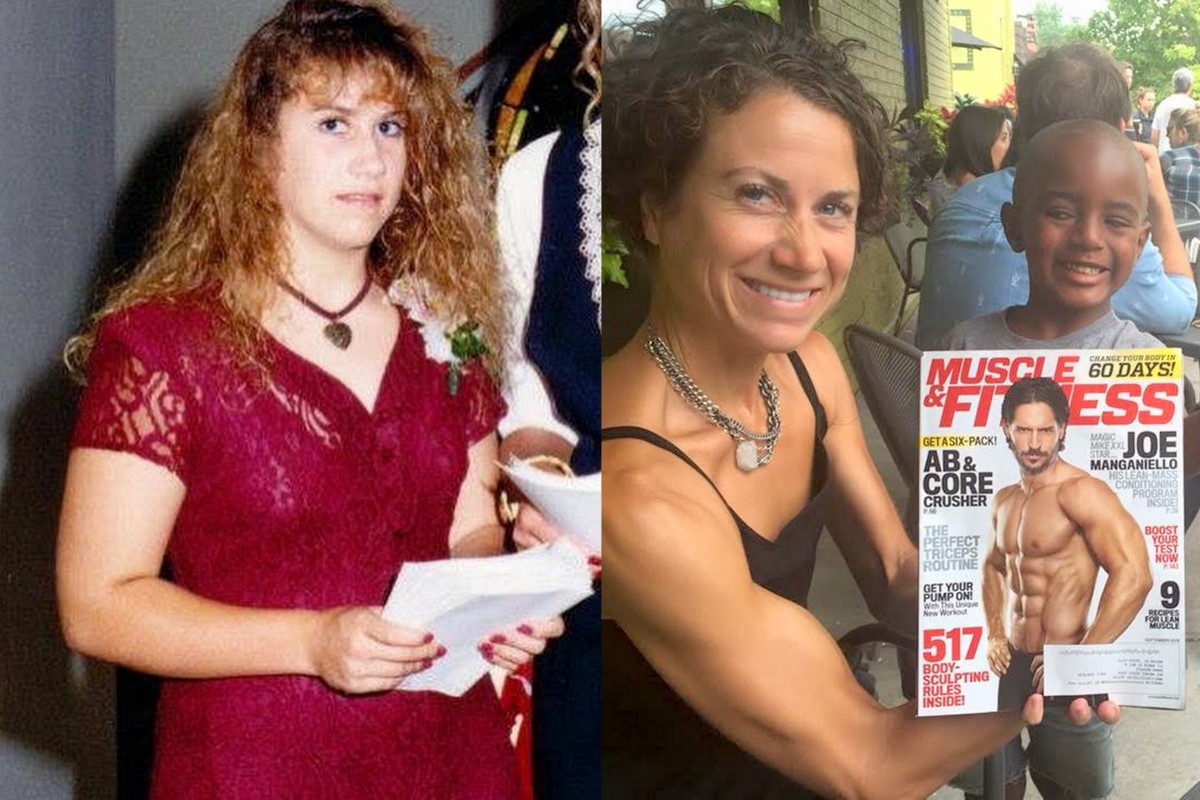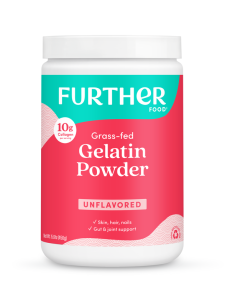How to be a Keto Athlete
You wouldn’t put diesel in a gasoline engine and expect it to run…but that is what Americans are guilty of doing to their bodies on a daily basis. We consistently fuel our bodies with processed, pre-packaged foods that evolutionary science has proven makes our bodies stop running efficiently. I also was guilty of this.
I still remember sitting in the library at age 16. I tried on my friend Lisa’s jacket. All of a sudden, I heard a boy sing, “fat girl in a little coat.” That started my wake up call.
Fat and frustrated, I finally decided to add in the nutrition part to my exercise and practice all the information I was about to preach to the world once I graduated. I was a fat “restrictor” and exercised constantly. After decades of being told by marketing geniuses that “fat free” was the way to lose weight, eating real fat was scary for me. Once I started adding fat to my diet, I slept deeper, felt calmer and better in that first week than I ever had. Now, I understand the biochemical reasons why restricting fat is not the answer. All my life I was taught that good-tasting foods made you fat. It is almost too much to imagine that you can have total satiety while enjoying butter, avocados, grass-fed cheeses and meats, and even sugar-free cheesecake. But it has been over five years and my body feels amazing and I never feel deprived. I traded in a lifetime of over exercising and fat restriction for nutrient-dense, fat-filled diet and lost weight in the process.
I have struggled with food and weight for my whole adolescence and into adulthood. My weight loss was a hard goal to achieve, but once I found the right foods and ditched the fake foods, it became easy. I learned the secrets of the hormone insulin and the lesser-known hormone leptin, that by evolving toward a very low-glycemic, high-fat (not just high-protein) diet, I had re-sensitized my biochemistry to these essential hormones, which turn off severe food cravings.
Best of all, my diet makeover required a lot less self-deprivation than what I was suffering from when I wasn’t losing weight. The nutrient-rich, relatively high-fat dietary approach I have developed for myself, exotic, little-known replacements for typical high-glycemic starchy foods and sugar are what finally gave me total peace with food, something I never imagined possible. The weight came off, even more than my original goal.
By following the ketogenic lifestyle, you too will understand how to eat to balance your hormones, sleep better, feel better and lose the weight! These tasty and exotic keto foods will keep you satisfied as well enhance your physique. You will even get to enjoy desserts again; after all, we also need to enjoy the sweetness of life.
How to become Keto Adapted
I often get asked how to fuel for a race before, during and after. When keto adapted this is very different than when you are a sugar burner. Sugar burners load up on carbs before during and after the race because their glycogen stores are so small (maybe 2000-2600 calories). This is also why they hit the wall in a marathon.
Dr. Volek is probably the worlds best scientist on ketogenic diets and performance. Listen to what he says:
I have been telling clients the exact same thing for years. So glad to hear him say the very same things. No pre-fueling required, no in race fuel needed unless race is longer than 3-4 hours, nothing really needed after. Also, daily workouts in a fasted state. All the things I have preached for your and his research backs it up.
ATHLETES AND KETO
As I work with clients, I meet people with a variety of lifestyles. Some clients prefer not to exercise, which is just fine and they do wonderful on the diet (proof that weight loss is 80% diet). Then there is the other extreme, where I get clients who are training for a marathon and are wanting to increase carbs now because they need to “carb load.” I often get asked “My high school son is in football and if you don’t recommend Gatorade, what should he drink?” Um, how about water? There is a much better way to fuel our bodies for performance than carbs.
Any person training for a marathon or endurance race MUST read the book The Art and Science of Low Carbohydrate Performance. But if the idea of running until your big toe nail falls off (which mine did on my first marathon) doesn’t appeal to you, check out Volek’s other book: The Art and Science of Low Carbohydrate Living which is for everyone, not just athletes.
It is especially interesting when Dr. Volek points out that he thought with all the data in the studies they conducted (him and Dr. Phinney have over 60 years of research combined) and low carb approaches, he thought they would change the world of performance. Yet, we have been so brain-washed that these studies came out with a “thud.” (not to mention our government driven high carb industry that doesn’t want you to know this). The idea that you can run marathons on coconut oil (which is what I do) is still considered crazy! It does take a few weeks to become “keto-adapted” with a very low carbohydrate approach, but if you give it time, I promise you, your energy will be “through the roof!”
So, if you are like me and it took about 6 months to sit and read a book cover to cover because cute little toddlers are demanding your attention instead, here are some awesome things that I highlighted in the book:
Myth: You need carbohydrates for fuel
Facts:
1. Our bodies store over 40,000 calories as fat, but we can only store 2,000 calories of carbs, which when “carb-burning” is why marathoners “hit-the-wall” and constantly need Gel Packs and Gatorade, yet still are low in performance at the end of races due to the depletion of carbs in their muscles/liver.

2. Carb-fueling tactics and sugar-based fuel sources create a body that fuels on carbs while simultaneously inhibiting fat burning. “This suppression of fat burning lasts for DAYS after carbs are consumed, not just the few hours following their digestion.” (pg. 7)
3. Even in athletes who have very little body fat are able to work out 20 times longer at their max level. Vigorous exercise fueled on carbs depletes the athlete in a few hours, but burning fat for fuel you can exercise for days. (pg. 10)
I love this chart; fat release plummets with a moderate increase in insulin; this is why I am so extreme… even a banana will cause fat burning to stop and you are no longer “keto-adapted.” Is a banana the “devil?” No, but for what we want to accomplish, it is going to stop your efforts.
The chart below demonstrates why I LOVE weight lifting, not only for myself, but for my clients. For example, one man who was training for a triathlon started a very low carb diet. He was 57 years old, 180 pounds with a BMI of 25. After the first 2 weeks (which his training intensity was decreased) he had the best training and energy of his life! In only 12 weeks, he lost 23 pounds of FAT and gained 6 pounds of muscle!
BENEFITS OF KETO-ADAPTATION
1. It improves insulin sensitivity and speeds recovery time in-between training sessions. Low carb diets are anti-inflammatory. This produces less oxidative stress while exercising, which speeds recovery time in between exercise sessions. This is why I was able to run every day while training for my marathons.
2. It spares protein from being oxidized, which preserves muscle. Branch chain amino acids are considered essential, because your body can’t make them, so you need to consume them for proper muscle building and repair (as well replenishing red blood cells). What I found so interesting is that BCAA oxidation rates usually rise with exercise, which means you need more if you are an athlete. BUT in keto-adapted athletes, ketones are burned in place of BCAA. Critics of low carb diets, claim that you NEED insulin to grow muscles; however, a well-designed ketogenic diet there is less protein oxidation and double the amount of fat oxidation, which leaves your muscles in place while all you burn is fat!
3. It decreases the build up of lactate, which helps control pH and respiratory function. A myth of low carb diets is that it puts you in a state of acidosis.
4. It improves cognition. Ketones aren’t just fuel for our body, but they are also great for our brain. They provide substrates to help repair damaged neurons and membranes. This is why I really push a ketogenic diet for clients who suffer from Alzheimer’s (type 3 diabetes) and seizures.
5. It doesn’t damage our immune system and less free radical damage in our cells. Free radicals are highly reactive molecules produced in the mitochondria that damage protein tissues and membranes of the cells. Free radicals happen as we exercise. But ketones are a ‘clean-burning fuel.’ When ketones are the fuel source, ROS (oxygen free radicals) is drastically reduced. Intense exercise on a high-carb diet overwhelms the antioxidant defenses and cell membranes which explains why extreme athletes have impaired immune systems and decreased gut (intestinal) health. A well-designed ketogenic diet, not only fights off these aging antioxidants, it also reduces inflammation of the gut and immune systems are stronger than ever. After reading this, I am no longer concerned about taking all the anti-oxidant supplements that I do! I also don’t worry about getting as many anti-oxidants in my food like with veggies and definitely not with fruit!
What to Eat?
So what does the suggested diet look like? This isn’t a high protein diet! Too much protein has anti-ketogenic effects because too much protein turns into sugar in the blood (this has been demonstrated to me with my extremely diabetic clients who eat too much protein even though they are staying under 10g carbs a day and it causes blood sugar issues). The diet consists of 1.75g/kg protein (or 0.5 to 1.0 grams protein per pound of lean body mass), less than 10g carbs, over 80% of calories as fat and then supplemented with minerals such as sodium (bone broth is my favorite way to add sodium; it is FILLED with minerals!). When your body switches over to ketosis, the liver releases a lot of sodium (and the water associated with it) so you actually need more salt in your diet when in a ketogenic state. Even the very lean subjects had double the fat oxidation rates on low carb versus when they did the same exercise on their typical high carb diet. (see chart below).
I want to also emphasis that the faster you switch your diet, the faster you will become keto-adapted. I use to think that in order to succeed, you should do “baby steps”. I know that if you do something 16 times in a row it becomes a habit. Habits are hard to break in the first place, so changing a habit of eating oatmeal and bananas at breakfast is hard enough.
In the past, I would have clients aim for 3 things to change a week, once you have those habits in place, add in and focus on 3 new goals to change. BUT after reading this book, I think you need to “pull off the band-aid” and go all in! The faster you do this, the faster you will stop being a sugar-burner and become a “fat-burner”.
It will still take a few weeks to become a significant fat burner, this is referred to keto-adaptation. There are some supplements that also help anyone who wants to burn fat for energy (or weight loss), which are discussed in this book as well as my book Keto Adapted. The best one would be l-carnitine. I take this in a capsule form before my runs in the morning.
I get all my fat burning supplements HERE. If you find yourself also needing more electrolytes, this is the only supplement drink I found that is lowest in sugar: click HERE to find LMNT.
TESTIMONY OF THE DAY
“Maria saved my life!I am so thankful that when I decided to change my life I found Maria right from the start. She covers every aspect of your health on what you allow into your body and even onto your skin.When I look at “keto” that is not Maria’s way, I feel so bad for the people being duped and all of their hard work going down the drain by eating more “keto” things that just increase cravings and alter your blood sugar. I have all of her books, but after reading keto I knew more about diabetes than family members with diabetes for 40 years. It’s so sad that they think “sugar free” labels means ok for diabetes. Why do doctors not teach this??Maria teaches you all of the packaging tricks to look for and all of the hidden names of sugar and how to read ingredients instead of claims. I love her!After losing 65 pounds with keto and carnivore I was stuck there for a while until I started PSMF and found that I feel my absolute best ever in my life on this way of eating.I have so much energy, I need less sleep, I feel so strong mentally and emotionally, food becomes so much less important. I love when I no longer think about food all day. I am so thankful that Maria, even as an introvert like me, will put her whole life on display to help people. Craig is so knowledgeable and they are always available for help. They are low key and straight forward amazing people. I love her cooking videos with the kids! My kids love to watch them with me. “ Brooke
Most people I consult are doing keto totally wrong. Get fast results with the my Mind-blowing Keto School!
Click HERE to check out my supplement plans!



















Have you tried UCAN ( a super starch) I used it on a 14 miler with nothing else. How do u carry coconut oil for your marathon.?
No I haven’t.
No. I carry nothing.
So there really isn’t a need to have one carb day for those who do heavy weight training?
Heck no!
Maria, you rock! Thanks for all this info, I needed to hear it this morning!
❤️❤️❤️
Peter Attia wrote 2 very detailed posts about Ucan. I thought you might find them interesting. http://eatingacademy.com/sports-and-nutrition/introduction-to-superstarch-part-i
Maria have you tried Bai Coconut drinks? Keto or not Keto? They are made with Erythitol and Stevia.
Yep. They are fine.
Adapt bars are also small and great, is what I find! 🙂
I follow a Keto diet, but feel depleted after a high intensity workout. What do you think I’m doing wrong?
It could be a lot of things.
This is so helpful. I’m training for a half marathon and I’m training fasted. I did some other races where I trained fasted but then made the mistake of adding some starch before the race because I was afraid I would bonk. Well eating the starch made me bonk! Now I know better. Next time I race if I eat anything beforehand it will be fat! All my worst running has happened if I tried to add in carbs beforehand. Now I know why! My body was confused about its fueling. Thank you for this article! I will go back and revisit my book by Phinney and Volek.
Love this post!
Thanks so much for all you do Maria! I’ve been fat adapted for almost a year now, and your website was the first place I read that you could be an endurance athlete AND be low carb. Thanks for giving me the information and confidence I needed to take this step.
I’m running the Boston Marathon on Monday. I’ll be eating UCAN 30 minutes prior to the start, but my start time isn’t until 11, and I have to be on the bus by 6 am! What would you recommend eating that morning that’s both metabolically efficient and portable on the buses?
I am so excited I found your page and I just bought your book! I look forward to trying your recipes 🙂 Jess
Thanks;))))
Maria I have started Keto adapted a month ago now. Have been on and off keto for a couple years. I have started going to the gym in a fasted state and running(it’s almost winter in Valdez, AK and I never liked running before and I love it even with the snow and rain) and feel great. Thank you for your help and knowledge.
Awesome Cacie!